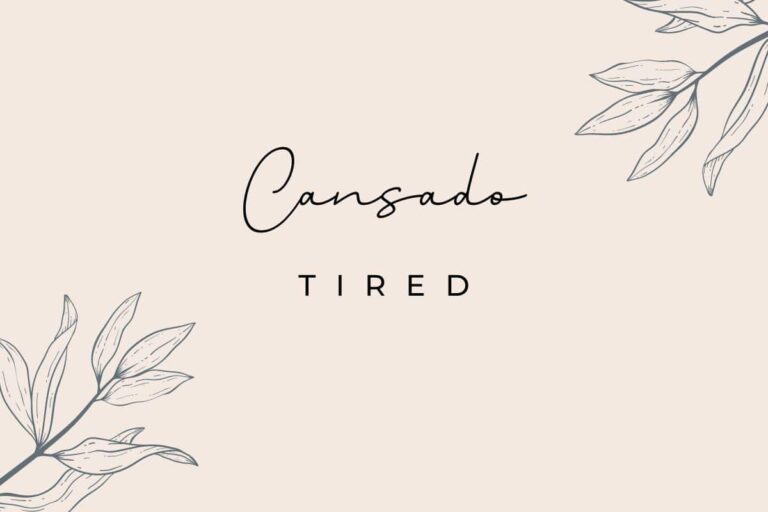5 Useful Ways to Say Have a Good Day in Spanish
When we meet someone walking down the street, or just over breakfast before saying goodbye to our loved ones, it is always a good idea to wish others a happy day! Learning how to say have a good day in Spanish is a sure way to brighten someone’s day.
Saying this in English is pretty straightforward, but there are many ways to say have a good day in Spanish. We’ll go through the most common phrases you can use to wish someone a nice day.
Read next: 100 Must-Know Basic Spanish Words For Beginners (with Audio)
Have a Good Day in Spanish at a Glance
Spanish | English |
Have a good day | |
Good day! | |
Have a good one | |
Have a nice day | |
Have a good time |
Contents
Common Ways of Saying Have a Good Day in Spanish

Que tengas un buen día
First let’s talk about the most common way of saying have a good day in Spanish – Que tengas un buen día – which literally translates to “have a good day”. This sentence is quite widespread throughout the Spanish-speaking world, so you will have no problem if you want to use it in Latin America or Spain.
Of course, one of the things you should keep in mind is that you must conjugate the verb tener (“to have”) depending on the person you are talking to. Let’s take a look at a situation you would use the informal tense.
Spanish
Que tengas un buen día, María
English
Have a good day, María
Depending on who you’re speaking to, you’ll have to choose between the pronouns tú and usted. Because we’re speaking with someone we have a casual relationship with, we would use the implied pronoun tú: que (tú) tengas un buen día.
But, when we speak with an older person, or when we are in a more formal context (for example, when we speak with our boss or professor), probably the best idea is to use the pronoun usted: que (usted) tenga un buen día:
Spanish
Señora López, que tenga un buen día.
English
Mrs. López, have a good day
In cases you want to give a little extra – maybe a good day isn’t good enough. If you want to say have a great day in Spanish, you would say que tengas un gran día.
Read next: Bueno vs Buena vs Bien How to Say Good in Spanish
¡Buen día!
Buen día means “Good day” and it is often used when we see someone for the first time in the morning. However, you can also use it to mean “have a nice day” in Spanish. It is a shortened version of que tengas un buen día.
It is also used to say goodbye when ending a conversation with someone you’ve been speaking with in the morning.
Spanish
- ¿Me da un kilo de pan, por favor?
- Aquí tiene. Buen día
English
- Can I have a kilo of bread, please?
- Here you go. Have a good day!
Que te vaya bien
But how would we translate que te vaya bien? Que te vaya bien is a phrase that has several meanings. We could say that it means “Have a good one” or “Have a good day”, but it is also a way of saying “Good luck”, “See you around” or even “Take care”. In short, it is a very useful phrase, since it synthesizes several ways to wish someone a nice day.
It is used in informal, casual conversations and not really something you would in writing, say to sign off in an email.
Spanish
- Creo que ya me tengo que ir a trabajar.
- OK, ¡que te vaya bien!
English
- I think I have to go to work now
- Ok have a good one!
Note on usage in Spain: In Spain, te or any other pronouns are usually omitted. Thus, you can simply say que vaya bien and it will be understood perfectly.
Read next: 7 Lucky Ways of Saying Good Luck in Spanish
¡Lindo día! or ¡Bonito día!
Another way to wish someone to have a great day is to say lindo día or bonito día . This expression is quite similar to saying just buen día, although lindo and bonito mean “nice”. For example:
Spanish
- ¡Qué bueno verte, Luisa!
- Lo mismo digo, Carlos. Que tengas un lindo día.
English
- Good to see you, Luisa!
- Same here, Carlos. Have a nice day.
So… what is the difference between lindo and bonito? Well, actually the main difference is that bonito is normally used in Latin American countries, and bonito is much more common in Spain.
Pásala bien
Pásala bien the final expression commonly used to say have a good day in Spanish. This means something like “Have a good time”, so we will only use this expression when the person we are saying goodbye is going to a some event. For example, it is common to tell someone ¡Pásala bien! when going to a birthday, party, or even just out for a walk:Spanish
- Esta noche iré al cine con mi novio.
- ¡Se oye interesante! Pásala bien.
English
- Tonight I’m going to the movies with my boyfriend
- It sounds interesting! Have a good time/
If you already knew this phrase, you may have heard another version: pásalo bien. Instead of saying pásala we have said pásalo. While in Latin American countries pásala bien is more frequently used, in Spain it is more common to say pásalo. However, according to the Nueva gramática de la lengua española (“New grammar of the Spanish language”), both forms are perfectly correct.
Conclusion
Beyond knowing the grammar of Spanish, having an idea about the common phrases that Spanish speakers use on a daily basis is beneficial. Learning how to say “Have a good day” in Spanish to people can put a big smile on the face of the person you are talking to! Now, the next time you go on a trip to Spain or Latin America, you will know perfectly well how you can wish someone a happy day.
¡Que tengas un gran día!






